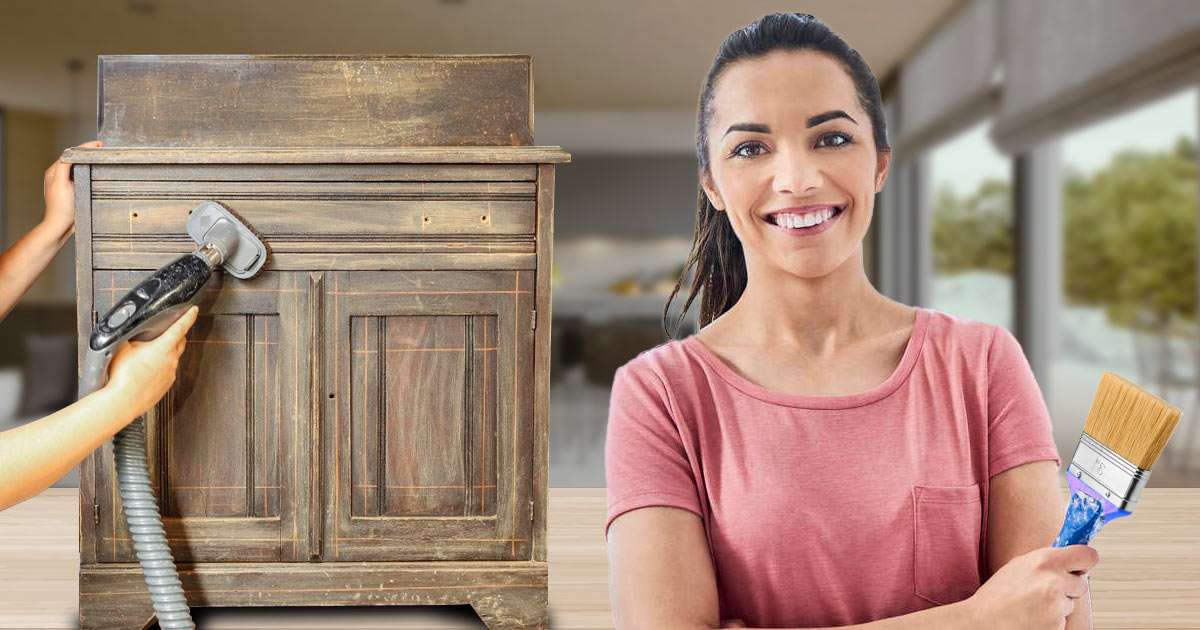15 Tips on How to Flip Furniture: A Guide to Mastering the Art of Furniture Restoration

How to flip furniture: a question many aspiring entrepreneurs and DIY enthusiasts ask. Furniture flipping, the process of acquiring, refurbishing, and selling furniture, offers a creative and profitable venture. This guide is dedicated to teaching the essentials of furniture flipping, specifically tailored for those new to the craft. We’ll cover everything from finding the right pieces to selling them for a profit, making it an essential read for flipping furniture for beginners.
Here are some useful flipping furniture tips, perfect for beginners:
Finding the Right Furniture to Flip
Tip 1: Discovering Ideal Sources
Learning how to flip furniture for beginners starts with knowing where to look for potential pieces. People who buy and sell used furniture can find great deals at thrift stores, yard sales, and online markets like Craigslist and Facebook Marketplace. Focus on finding solid wood furniture, as it often offers better durability and easier refurbishment. The key is to look for items that, despite their worn appearance, have quality craftsmanship and potential for transformation. Keep in mind that the best pieces for furniture flipping are those that require minimal structural repair but allow for creative redesigning.
Tip 2: Choosing Pieces with Potential
Successful furniture flipping hinges on selecting the right items. Look for furniture with a solid frame but only superficial damage like scratches or an outdated finish. Avoid items with severe structural issues unless you are skilled in advanced carpentry. Vintage items are often a good bet, as they are not only made of quality materials but also have unique styles that are highly sought after in the market. When flipping furniture for beginners, it’s better to start with simpler projects and gradually move to more complex ones as you gain experience.
Preparation for Flipping
Tip 3: The Basics of Cleaning and Repair
One of the foundational furniture flipping tips is to start by cleaning and making basic repairs. A thorough clean can reveal the true condition of the furniture, helping you assess what needs fixing. Simple repairs might include tightening screws, fixing wobbly legs, or patching minor chips and scratches. Always ensure the piece is structurally sound before proceeding. This step is essential for people who are just starting to learn how to flip furniture because it sets the stage for the more artistic work that comes next.
Tip 4: Essential Tools and Materials
For those embarking on furniture flipping, having the right tools is essential. Basic supplies should include sandpaper, paintbrushes, a good set of screwdrivers, and a staple gun for any upholstery work. Choose quality paints and varnishes that will give a durable and attractive finish. Additionally, keep a variety of fabrics on hand if you plan to venture into upholstery. This tip is a cornerstone of how to flip furniture for beginners, as the right tools and materials can significantly impact the final product’s quality.
Design and Creativity
Tip 5: Keeping Up with Design Trends
An important aspect of furniture flipping is staying abreast of current design trends. This research will inform your choices in style, color, and finishing techniques, making your pieces more desirable in the marketplace. For ideas, websites, social media sites, and magazines about home design are great. Remember, the goal is to create pieces that are not only visually appealing but also align with current market preferences, a key consideration in how to flip furniture for beginners.
Tip 6: Choosing Your Style
When it comes to furniture flipping, selecting a style or theme is critical. Consider what styles are trending and what personally resonates with you. This could range from mid-century modern to a rustic farmhouse. Think about the type of people you want to buy from you and what styles might appeal to them. The colors and textures you choose should also match the style you’ve chosen. This step is vital to how to flip furniture, as it helps create a cohesive and appealing product.
Tip 7: Mastering Color and Technique
Color selection and application technique are crucial in furniture flipping. Experiment with different hues and finishes, like matte, glossy, or distressed, to find what works best for each piece. Techniques such as distressing, using chalk paint, or applying glaze can add character and uniqueness. When choosing the color and method, it’s important to think about the piece’s style and how it will be used. This is especially important in furniture flipping for beginners, as mastering these skills can set your work apart in the marketplace.
Restoration Techniques
Tip 8: The Art of Sanding and Stripping
In furniture flipping, sanding, and stripping are essential skills. They prepare the surface for painting or staining and ensure a smooth, professional finish. Use a hand sander for larger, flat surfaces and sandpaper for nooks and crannies. Be patient and thorough; a well-prepared surface will significantly enhance the final look of the piece. This process can be particularly satisfying for those learning how to flip furniture for beginners, as it reveals the hidden potential of the piece.
Tip 9: Skillful Painting and Finishing
The right painting and finishing techniques can elevate a flipped piece from good to great. In furniture flipping, it’s important to apply paint evenly and choose the right type of paint for the material you’re working with. Finishing touches like a sealant or varnish not only protect the piece but also give it a polished look. Pay close attention to this step and be patient, especially if you are new to changing furniture.
Tip 10: Upholstery and Detailed Work
Upholstery can dramatically change the look of a piece of furniture. For those in furniture flipping, learning basic upholstery skills can add significant value to your projects. Choose fabrics that are in line with the style of the piece and are durable. Don’t forget about the small details like nails and buttons, which can add a professional touch. For those exploring how to flip furniture for beginners, upholstery offers an opportunity to add a personal touch and increase the item’s marketability.
Pricing and Selling
Tip 11: How to Price Your Flipped Furniture
One of the most crucial furniture flipping tips is pricing your pieces correctly. The price should reflect the cost of materials, the time you invested, and the market value. Find out how much other similar things are selling for and set your price to be competitive. Don’t forget that your goal is to make a profit while giving your customers a good deal. Pricing can be one of the more challenging aspects of furniture flipping for beginners, but it’s essential for business success.
Tip 12: Effective Photography for Selling
Good photography is key to selling your flipped furniture. Clear, well-lit photos that showcase the piece from multiple angles can greatly influence a potential buyer’s decision. To make the furniture stand out, use natural light and a neutral setting. This is particularly important in online marketplaces, where visuals are the primary means of attracting buyers. For those new to furniture flipping, learning basic photography skills can be a valuable investment.
Marketing and Sales Channels
Tip 13: Online Marketplaces for Furniture Flipping
Online marketplaces like Etsy, eBay, or Facebook Marketplace are ideal platforms for selling flipped furniture. They offer a wide audience and easy-to-use platforms. Writing clear, engaging, and detailed product descriptions is crucial. Include the sizes, the materials used, and any features that make it stand out. Online markets can be a good way for people who are just starting to flip furniture to find customers and build a name.
Tip 14: Local Markets and Exposure
Participating in local markets, craft fairs, and flea markets can offer valuable exposure for your furniture flipping business. These venues allow you to showcase your work in person, connect with customers, and build a local following. They’re also great for testing the market’s response to your pieces and getting direct feedback. For people who are new to flipping furniture, neighborhood markets can be great places to learn and meet other people in the business.
Tip 15: Building a Brand in Furniture Flipping
Creating a strong brand is key for long-term success in furniture flipping. Develop a unique name and logo that reflect your style. Show off your projects, interact with your audience, and create a community around your business on social media sites. To keep your audience interested, share behind-the-scenes videos, do-it-yourself tutorials, and before-and-after pictures. For those learning how to flip furniture as beginners, building a brand can help establish credibility and attract a loyal customer base.
Enjoy Your Furniture Flipping Journey!
Furniture flipping is not only a profitable business but also a platform for creative expression and sustainability. If you want to start selling furniture but don’t know where to start, these tips will help. With dedication, creativity, and business savvy, anyone can learn how to flip furniture for beginners and turn it into a rewarding venture.

